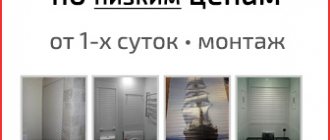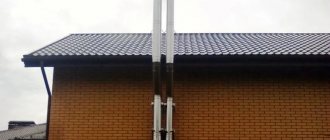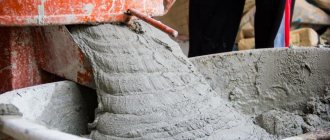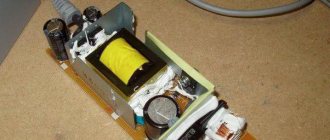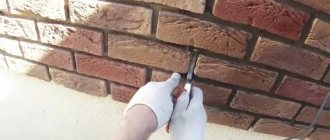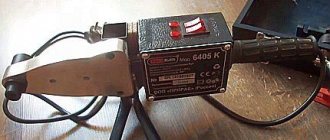Every self-respecting man, in accordance with his duties as the “master of the house,” has a drill in order to hang a shelf, picture or cabinet at the request of his significant other. But the walls in houses and apartments differ in their structure, density and purpose. So, drilling a hole in a load-bearing wall is much more difficult than in an interior partition. Accordingly, drill bits for drills differ both in their purpose and in the material from which they are made. We will talk about how to choose the right drill bits for concrete, brick or stone in this short article.
How and what to drill into a brick wall
We will send the material by email
The question of how to drill through a brick wall does not sound entirely correct, since it is quite vague. The interrogative pronoun “what” can mean either a cutting tool, or an electric or manual device that rotates this cutter, therefore, it would be more correct to replace it with the pronoun “how”. In this article we will look at how to do this and what is needed for this.
It is not water that wears away stones
The main working part of any drill is the tip. It must be made of durable material that can withstand work under conditions of enormous loads and overheating, because its main task is to literally break the strong structure of the stone.
The vast majority of drills are tipped with an alloy of carbon-rich tungsten and cobalt. This alloy is popularly called Pobedit alloy. It has very high strength values and is capable of making holes in such durable rocks as granite and marble.
By the way, the same material is used to make tank armor-piercing shells.
Stronger and more durable cutting tool edges are made from synthetic diamond. This super-hard material guarantees trouble-free drilling into granite and reinforced concrete of the highest strength. However, the cost of such instruments will be higher than their Pobedit analogues.
Selecting a cutting tool
Today, several types of bricks are used in construction:
In addition, bricks made from the same materials can be construction, facing and fire-resistant (clamotte is added). Be that as it may, in any case, this is a mineral product, when rubbed against it, the metal very quickly wears out, since it is nothing more than an abrasive. This means that the requirements for the cutting device are based primarily on this factor.
Drill selection
To force a hole in a brick wall, drills with pobedit tips are most often used. This is necessary, since steel (even tool steel) is ground down by intense friction against mineral abrasive formations (composite or natural). But at the same time, the word “win” is not the correct name for the hard alloy that is used for the cutting part of the drill - this is a general concept for alloys VK10, T15K6, etc., adopted in the USSR and remaining to this day. In general, 90% WC (tungsten carbide) and 10% Co (cobalt) with small additions of C (carbon) are used for pobedit - the percentage composition varies for each brand.
Continuing to consider the question of how to drill a brick wall, it should be noted that the process and requirements for the tool are practically no different from drilling concrete, since in any case we are dealing with minerals. This means that the drill in an electric drill or hammer drill must rotate in shock mode, that is, the hole is made more by frequent sharp blows, and the rotation works to dump the mineral chips formed in this process. For a drill, such drills are made with a diameter of up to 10 mm, but for a hammer drill, the drill may have a shank (either corresponding to the diameter of the cutter, or narrowed) so that it can be secured in the chuck.
Note: There are also diamond-coated drills for drilling without impact, but they are used extremely rarely.
Comments
| Pavel Write [04.08.2013 - 16:31] |
How to replace brick in a window opening
| papastroy Write [03.05.2010 - 16:35] |
Very helpful and on time, in my case. Namely, the hired builders went too far with fraud when purchasing materials, and the customer had to take over the supply of materials. The builders took revenge - they made the jointing depth in the facing brick laying about 10 mm, i.e. obviously outside the glaze coating. As a result, 20% of the brick on the north side “exploded” over the winter. I can’t find official recommendations or standards on this topic. Unfortunately, the author did not delve into the topic (a stain on a brick is not serious enough), construction “tricks,” as in my case, so that ordinary people would keep their eyes open in advance and not waste time and money on elimination. But thanks anyway.
| dron [16.05.2009 — 16:01] |
great, but what if the brick was reworked?
| Olya Write [04/08/2009 — 08:38] |
For a single brick, and for only one outer mile without bandaging, it’s beautifully painted. And what kind of board is that visible in the masonry in the place of backfilling?
Video description
How to drill a concrete (brick) wall with a drill without impact (screwdriver).
Choosing Core Mills
To install socket boxes or drill holes for installing heating and water pipes, the diameter of the drills is not enough and for this purpose, core cutters are used, as in the top photo. Such cutting devices come with pobedit tips or diamond coating - this is also an important factor. Since it is possible to make a hole in a brick wall taking into account its further processing, for example, for the passage of a heating pipe, in most cases they use pobedit crowns, which, when entering a mineral wall, leave a not entirely smooth and clearly defined circle. Such a trifle has absolutely no significance if further surface finishing is planned. The diameter of pobedit cutters varies from 35 to 120 mm. If the wall is too thick, then use an extension cord.
The diamond core cutter can be segmented or solid and its diameter varies between 35mm and 162mm. This increase in capabilities by 42 mm is explained by the fact that this cutter is used in a drill or hammer drill without an impact moment, that is, it is used specifically for drilling bricks and the hole is formed solely due to the friction of the diamond-coated segment against the mineral wall. Such cutting devices are usually used for drilling decorative (cladding) bricks - the hole is perfectly smooth, without a torn circle.
What do the professionals advise?
Concrete structures are quite strong and difficult to drill. In addition, quite often drills come across crushed stone, which is part of the concrete mixture from which wall and ceiling slabs are formed.
Holes in concrete have to be made quite often, especially during the process:
- finishing works;
- furniture installation;
- air conditioner suspensions;
- additional electrical wiring device;
- installation of plumbing.
There are two ways to solve the problem of holes in a concrete wall:
- an impact drill, or better yet a hammer drill, with a Pobedit drill bit;
- diamond drilling.
It is worth noting that it will not be possible to make a hole in a concrete wall with ordinary drills, so before starting work you need to purchase drills with specially soldered plates made of high-strength pobedit alloy, which do an excellent job with concrete and brick. But it is not recommended to use them for soft materials, since pobedit drills do not cut them, but crumble them.
Choosing a power tool
It is impossible to answer exactly how to drill a brick wall correctly, since the diameter and depth of the holes vary. Therefore, not only different cutting devices are used for this purpose, but also different power tools that provide rotation.
Drills and hammer drills
To make a hole in a brick wall, just use an electric impact drill, like the one in the top photo. Of course, it is not at all necessary that it be Makita, because it is the best brand in Europe and Asia, therefore, its cost is quite high, although quite justified (those who have worked with such a tool understand this). You can use any domestic drill that has an impact mode, but if you use a diamond drill or diamond core bit, then the rotation mode is sufficient. But it should be mentioned that a drill such as Makita or, for example, Bosch, is designed for long-term operation not only with drills, but also with crowns, and at the same time the gearbox maintains its integrity for years.
The best of the best
If we consider specific manufacturers, it is worth noting Bosch. This company produces the best tools chambered for SDS-max, of which it is the inventor. Among others, German DeWALT drills perform excellently, which are excellent for household and professional use.
If we consider drills for more specialized purposes, then Makita comes to mind. The flat drills from this company cannot be called the best, but the breaking ones show excellent performance even in harsh working conditions.
Among public sector employees, it is worth highlighting Elitech. The company makes excellent drills for home use. However, you should not rely on them when processing dense rocks.
Do not forget to lubricate the shank after purchasing the tool. It is advisable to use lubricant of the same brand as the drill. However, this is not critical.
Video description
A hole in the wall without a hammer drill in 3 minutes.
For holes for ventilation, large-diameter sewer pipes, for installation of openings of complex shapes, etc. Diamond drilling is used in horizontal, vertical and inclined planes. In one pass, a diamond-coated hole saw can make a hole with a diameter of 400 mm and at the same time the edges of the circle will remain clear and neat. Such work is carried out by special drilling machines, which consist of a motor mounted on a special frame and a diamond bit.
During the drilling process, water is supplied to the place where the cutter comes into contact with the object, which cools the bit segments and washes away the waste from pieces of mineral (brick, stone, concrete). For such units, you can additionally use a water vacuum cleaner, which sucks out water from the dump. If it is not possible to supply water (the approaches do not allow it), then drilling is carried out using the dry method, with breaks to cool the cutter.
Preparatory work
Drilling diagram for a brick wall.
Before you begin, you should carefully consider the location of the holes in the wall. The surface where holes are supposed to be drilled must be carefully examined to ensure that there is no possibility of damage to internal electrical wiring, water pipes, etc. To avoid bumping into an obstacle when drilling, you should use a metal detector. After this, we drill the holes safely, nothing will interfere. However, you should remember that even after checking the wall with a metal detector, you need to drill into the wall carefully.
Before you start drilling holes, you need to mark all sockets, switches and lamps. As a rule, electrical wires run from these devices along a vertical line to the distribution box (it must be borne in mind that sometimes they can be run diagonally). For safety reasons, in order to find communications recessed in the plaster in time, we drill the first 10-20 mm by hand (a screwdriver is perfect for these purposes). When doing this, drill very carefully, because... Damage to electrical communications can lead to the most negative consequences.
How to make large holes in walls? Choosing the optimal tool
Drilling large holes requires large nozzles, and they are different for wood and concrete. We will tell you which attachments to use for which tasks and recommend reliable drills.
To drill holes for air conditioner mounts, cable pulling, installation of a soldered pipe for water supply or connecting furniture structures, you will need a large drill. Although large nozzles for wood and concrete are somewhat similar, they are still intended for different tasks and they are not interchangeable. We will tell you about them and recommend a couple of good attachments for wood and concrete. We have already told you how to distinguish drills for wood, metal and concrete. Here we will focus on large attachments, which we do not use very often, but without which we can’t go anywhere in everyday life.
Advice from an experienced master
A good owner always has several drills of different types for working with a drill - drills for wood, metal, brick and concrete. To work with a drill on concrete, it is best to stock up on different drills, including Pobedit drills and metal drills. This is necessary so that, during the drilling process, when faced with the fact that the drill rests on the metal (this happens when there is metal reinforcement under a concrete slab), it would be possible to easily and quickly rearrange the drills - replace the concrete drill with a metal drill - and continue work without delay or delay. And when the metal runs out, you can put back the sds concrete drill. Those experienced craftsmen who have been working with a drill for many years know how to sharpen the drill in such a way that it can be used to work both on concrete and on metal, but for a person who has never encountered this before, this is an elusive task, and even better don't start and don't try.
It is also very important that when working with a drill, the drill does not overheat. To do this, it must be periodically cooled regularly (approximately every 15-20 seconds of operation). To do this, pause and lower the metal drill into a small container of cold water. Hold the drill there for a while, and then, when it cools down, continue the drilling process. There is no need to dry it. However, this rule only applies when drilling metal. When drilling wood, there is no need to cool it - it does not overheat. And when working with a Pobedit drill, it is not cooled in water - only in a natural way. We worked, drilled for half a minute, turned off the drill. We waited until the drill cooled down, and only then we continued working. You cannot use any cooling liquid during the operation of the Pobedit drill.
There is also a situation when, during the drilling process, we come across a stone under a concrete base. For stone, a regular sds concrete drill will not work - we take a chipper in our hands. After completing the work with the stone, we return to the concrete drill.
If in the process of work you have a need to drill one or several holes, no matter what diameter, not in an ordinary wall (interior partition), but in a load-bearing one, then it is best to use a hammer drill for this, and not an ordinary drill. You should not try to do this with a household drill, it is useless. And, of course, in this case we will need a drill bit for a concrete hammer drill.
But when working with ceramic or tiles, a hammer drill is not needed. It will only crack the tiles. You don't need an impact drill either - it will also crack and ruin your entire tile. Forget about a concrete drill bit. Only a household drill with a regular, small-diameter metal drill will help here.
You can use a Pobedit drill bit for drilling ceramic or tiles (not including the hammer drill mode).
Those drills that become dull during work can be easily re-sharpened - metal ones with regular sandpaper, and pobedit ones with a diamond disc. However, if you choose expensive, high-quality drills from well-known manufacturers in the store, you are unlikely to ever need to sharpen them - they simply do not get dull.
Further, upon completion of this review of drills, we offer you to watch a short video on the topic we discussed.
Large diameter drill bits for wood
Non-separable type drill bits
The most common type of large-diameter wood drill. Feathers are a sharpened blade with a pointed tip, which is designed to center the drill in the hole (i.e., so that the drill does not go to the side). Using them you can drill holes from 10 to 76 mm. The maximum drilling depth for them is about 150 mm, however, there are special drill attachments that can extend the pen drill up to 300 mm.
The main advantage of pen drills is the ability to drill deep through holes for connecting structures with studs and bolted connections. They are also the cheapest of the large size wood cutting attachments. So, a good feather drill can be bought for 100 – 150 rubles, for example, Sibrteh 703097 with a blade width of 50 mm.
Adjustable feather drills
A separate type of large bits for wood are feather drills with adjustable diameter. They allow you to set different nozzle diameters depending on the required hole. Drilling with such feathers is performed at low speeds with high torque, so they will require a powerful drill.
Depending on the manufacturer, the cost of a drill varies from 500 to 2000 rubles. For that kind of money, in principle, you can buy a small set of ordinary feather drills. But considering that here the step can be set within 1 mm (and not all sets have all standard sizes of drills), then sometimes it is advisable to buy an adjustable pen. For example, for 650 rubles you can buy a good hardened steel drill BK8 STAYER 2951 with the ability to change the diameter from 22 to 76 mm.
Crowns
Core bits or core drills are used for drilling large holes with a diameter of 22 to 127 mm. Using them you can easily drill a hole for wiring or any accessories. Wood crowns consist of a drill and, in fact, a hollow crown attachment. To work with attachments of different diameters, one drill holder is enough. Almost all drills have hexagonal (not round) shanks for better grip on the chuck.
Given the nature of the work, hollow crowns must be made of durable material. The highest quality crowns are made bimetallic - from an alloy of steel and cobalt. The larger the diameter of the nozzle, the more cutting teeth there are on the edge. Please note that on some crowns the teeth are shaped like a right triangle and point straight up, while on others they are inclined in the direction of rotation (clockwise) by 30 - 40°.
The most popular diameter is 68 mm, since this type of crown is used to make socket boxes in wooden walls and sandwich panels. On average, the price of a normal crown starts from 500 rubles. In addition to 68 mm, crowns of 20, 25, 35, 40 and 51 mm are considered common - other sizes are used very rarely in everyday life. If you buy for home, we recommend buying it in a set to save money. Bosch 2608580868 running bits , which, in addition to wood, can also drill sheet metal up to 0.8 mm thick.
Source
Scope of application of diamond drilling
Diamond drilling of holes can be done to a depth of up to 5 meters, and the diameters of the holes can be almost any ranging from 18 to 1000 mm. Thanks to this, the list of drilling tasks is very wide. Basically drill holes and openings:
- in ceilings under risers of heating and gas supply pipes;
- in floors for laying power supply systems;
- for basin communications;
- for water, gas, sewerage, heating pipes;
- for installation of chemical anchors;
- in the foundation for vents;
- for fire protection systems;
- under the ventilation duct;
- for natural supply ventilation valves (wall-mounted ventilators Aeropac, Aerolife, Aerovital, Aeroplus);
- for installation of air conditioning systems;
- for installation of railings on flights of stairs, fencing railings, and much more.
*all prices indicated on the website are for informational purposes only. For exact prices, please contact our managers by calling +7 (383) 291-61-30.
Almaz-Profi LLC. © 2005-2021 Novosibirsk, we work throughout Siberia
How and with what to drill a brick wall
Rare repairs can be done without drilling into the walls. If they are made of brick, it is important to familiarize yourself with how to carry out such manipulations before starting work.
Before drilling into a brick, you need to select a tool. The most common options are a drill and a hammer drill. The latter is a professional device, which means that with its help you can cope with the task in a shorter time. If you plan to use a drill, then the main thing for it is to choose the right drill.
What types are there?
The difference between special
A feature of the building material for masonry is increased fire resistance. Used in the construction of stoves, chimneys and fireplaces. This is the main feature when distributing red bricks into classes. This type of product is used for cladding external walls. A special type of tub material can be solid or with holes of varying sizes.
Private: what's special?
It represents a common building material of red color, which is used for laying walls, cesspools and other buildings. In the future, it is decorated using special plaster, decorative tiles and other methods. Used for interior partitions or external load-bearing walls. The entire masonry consists of this type of building material. Only the last row, made of the front layer, differs.
Facial type
This includes fireclay and porcelain building materials, the top layer of which has a special crumb applied to it. Used for cladding and decorative work. The cost of fireclay brick is relatively high, so it is rarely used and only half a brick is laid. There is also a separate subtype - clinker, used for cladding external walls. The advantages of the building material are improved aesthetic and operational parameters.
Methods for drilling bricks
Drilling a brick wall can be done in one of three ways:
The first method is the simplest, but less technologically advanced. It is used if the master does not have the appropriate equipment. Electromechanical technology allows drilling to be completed in a shorter time. For this purpose, a hammer drill or drill is used. As for automatic drilling, it can be used to make holes of impressive diameter - up to 110 mm.
Manual drilling method
Drilling holes in a brick wall using this technology is carried out if there is no electrical equipment. All you need is a hammer and a bolt. The latter is a metal tube that you can make yourself or purchase ready-made. If you resort to the first solution, you will need to prepare a 30 cm piece. The diameter of such a device should be 25 mm or more. Notches are made at one end.
The technology suggests itself if you imagine these tools: once the location for making the recess has been determined, the bolt is installed at a right angle to the wall, and its other end should be struck with a hammer. The bolt rotates, which will prevent the formation of large amounts of dust.
Electromechanical drilling technology
In order to drill a wall in a shorter time, you should use technology that requires the master to have a drill or hammer drill. In the first case, you need to make sure that the equipment has a shock function. Otherwise, you will have long and monotonous work, which, among other things, may not allow you to achieve a positive result.
Drilling can be done right through the brick. For this purpose, a hammer drill with diamond bits is often used. The working part of the equipment must have rounded edges. This equipment should also have an impact option. In order to avoid placing a large load on the hammer drill and consumables when it is necessary to make holes of impressive diameter, you should start with small drills and finish the work with large ones.
If you have warm ceramics or hollow products, you need to turn off the impact function, as this may destroy the material. If the brick has a high grade and good strength, which also applies to clinker products, the electrical device is set to medium speed, otherwise the equipment may become dull.
Attention! If the wall needs to be drilled for installation of a hood, socket or plumbing system, diamond drilling should be used. For this purpose, a crown with especially strong teeth is selected. If used with the tool in impact mode, it may cause the base to be torn out. In order to eliminate such a nuisance, you need to start drilling from the masonry seam.
Automatic brick drilling
If you need to drill a brick wall in a hard-to-reach place, for example, in a corner, or you need to make a recess of impressive diameter, ordinary tools will not help. Here you should use automatic technology, which involves the use of special installations.
Typically, the process involves crowns with a diameter of 2 cm or more. The drilling depth can reach 4 m. This technique is good because it is silent, and 1 cm of thickness can be overcome in a few tens of seconds. To operate such equipment, you need water and an electrical connection. The tool is fixed on a vertical surface, then water is supplied to the drilling site. The work is carried out automatically without human intervention.
Jig for drilling holes without dust
Due to the heterogeneity of the walls, especially those made of brick, the drill often “leads” away from the intended place and if there is more than one hole, then the suspended shelf does not hang horizontally or, even worse, it is impossible to hang it, since the installed dowels do not coincide with the mounting ones loops. You can use a jig in the form of a sheet of plywood with a pre-drilled hole, but when drilling due to vibration it can also move and again the result will not be what was expected. But there is a simple technology that allows you to drill two or more holes strictly in specified locations.
Precise hole drilling
It turns out that the problem can be solved very simply by gluing a sheet of any sandpaper with glue or double-sided tape to the entire area of the side of the conductor that is attached to the wall. At the same time, the adhesion of the jig to the wall surface increases many times over, and during drilling, the specified accuracy of positioning of the jig is ensured. The hole will appear exactly at the marking location.
Depending on the weight of the product and the density of the wall, you have to drill holes for dowels of different diameters, usually 6 or 8 mm. For the versatility of the jig, it is necessary to drill several holes of the desired diameters with an ordinary drill.
To top it off, attach a plate to the end of the base of the conductor at a right angle. Thanks to this modification, most of the drilling products will remain on this shelf, which will prevent contamination of the wallpaper and reduce the scattering of dust in all directions.
The proposed device is also indispensable when drilling holes for attaching skirting boards. Drill a hole in the jig at a given height from the shelf. When drilling, place the shelf on the floor and all the holes will be exactly at the required height from the floor, which will guarantee a tight fit of the plinth to the floor surface.
Sometimes you have to hang a product on the wall, for which you need to drill several holes in the wall and maintain the distance between them with greater accuracy. If the wall is brick and plastered, then it is impossible to perform accurate drilling without a jig.
To make a jig for precision drilling, a board, sheet of plywood or metal is suitable. After marking, the required number of holes is drilled in the sheet using an ordinary drill. Consider the case for fastening the product with two screws. One hole is drilled with a diameter equal to the diameter of the drill that will be used to drill the wall, the second with a diameter equal to the diameter of the self-tapping screw. After the jig is made, the first hole is drilled in the wall using the jig for the precision drilling described earlier, and a dowel is driven into the hole.
The jig is screwed to the wall using a self-tapping screw into the hammered dowel and leveled using a water level so that the drilled holes are on the same horizontal plane.
Thanks to the use of a simple jig, which can be made in a few minutes from any available material, the holes were created exactly at a given distance from each other.
Using the same technology, you can drill a whole series of holes at a greater distance from each other. In this case, first the outer holes are drilled using the technology described above, the jig is screwed with two outer self-tapping screws, and then all other holes are drilled.
The proposed options for conductors are convenient when renovating an apartment, when dirt is common everywhere. However, when the renovation is completed and cleaned up, drilling becomes stressful. You don’t want to stain your carpets and furniture with concrete or brick chips and dust.
Drilling tool
If you're wondering what to use to drill into a brick wall, there are several options to consider to decide which one is right for you. The simplest method is mechanized, which involves the use of a hammer and a bolt. This work algorithm will not allow large-scale work to be completed, but if there is only one hole, this approach will be ideal.
A more technologically advanced method compared to manual drilling is the electromechanical method. Here you can’t do without a drill, or, at a minimum, or at a maximum, without a hammer drill. It is better if the drills and augers are new, then the work will go faster. But diamond drilling of brick walls is usually carried out by professionals. It usually does not produce dry dust, but the work area will still require cleaning. The thing is that diamond drilling is accompanied by cooling of the equipment with water. However, only specialists can cope with such a task.
Attention! If you plan to drill brick walls yourself using electric household tools, you need to not only mark the hole, but also core the future hole. This will prevent the drill from slipping.
PromAlpForum
What is the best and easiest way to seal holes in a brick facade?
- Quote
Post by Instructor » June 17, 2011, 03:02
Hi all! Just recently I was removing pieces of brick cladding that were falling out in the area of the interfloor belts on a tall building.
I don't want to bother with the solution. And it has to be carried far and the gaps are large. The house is sagging and such places are not unique there and the volume increases. Has anyone tried to fix this with foam and sealant? Still easier and faster.
Re: What is the best and easiest way to seal holes in a brick facade?
- Quote
Post by alpinoid » June 17, 2011, 06:34
Common situation. At Yantarny, such belts were laid with sawn bricks (tiles, so to speak).
Priming, mesh reinforcement, etc. The next year the belts began to tear. The house plays, in winter and summer, and the coefficient of expansion and contraction of a whole brick embedded in the masonry is completely different than that of adhered tiles. Moreover, behind the tile is a reinforced concrete slab, to which the tile is mostly attached, and concrete and brick react differently to temperature. The belts turned out to be the weakest link. Over time, all the belts on the above house fall off. I don’t know how they dealt with this at Yantarny (by that time I had left this construction site; my brother continued to work, you can ask, but he went on a business trip for a few days. If only later). I would suggest this option: since you don’t want to bother with the solution, you need to clear everything and actually seal all possible leaks and the like with foam and sealant. And so as not to have to worry about aligning the belts and giving them an aesthetic appearance, seal them with decorative panels (with recessing) to match the brick.
Selecting and purchasing a drill
The diameter of drills for making holes in brick usually varies from 6 to 8 mm. This value is average, as is the depth, which is usually 15 cm. To make holes with more impressive parameters, it is better to use a drill. Its length reaches one meter, but it is used in conjunction with a drill and a hammer drill. The first one must have the function of a hammer drill.
When there is a thick wall, it is better to act in several approaches. To begin with, a 20-centimeter drill is used, and the recess is approximately 15 cm. Then the depth should be increased to 40 cm, and at the final stage - to 50 cm. During this process, a hammer drill will be needed.
Attention! The presence of an outlet on the wall will help identify and naturally not affect communications. If you don’t have the appropriate equipment at hand with which you can find out whether the wires are running inside, you can follow the first recommendation. But the electrical wiring must be de-energized in any case.
Why and why are there holes in bricks?
Holes in bricks are needed to make the brick lighter and easier to lay. Brick with holes retains heat much better and protects against cold. Well, the mortar sticks better to such a brick. Stove without holes.
the system chose this answer as the best comment add to favorites link thank ForeM an [11.9K] 4 years ago
Hollow (the holes may or may not go through) brick is otherwise called effective. Its various shaped holes in percentage terms make up a range with values from 13 to 45.
Now about the advantages (in order of decreasing importance):
- increasing thermal protection indicators, such a brick will be “warmer” than a solid one;
- achieving a lighter weight of the product, which reduces the degree of pressure on the foundation and reduces transportation costs;
- Less clay is consumed during production, and the technology itself is simpler.
There is also a porous hollow brick, which is obtained if sawdust (or PVC balls) is added to the clay, thoroughly mixed and fired. Under the influence of high temperature, closed cavities are obtained (the material simply burns), which further saves heat. Such bricks have significantly larger dimensions (up to 10 times) than simple bricks and, accordingly, there are fewer cement seams, which saves raw materials and enhances thermal protection.
comment to favorites link thank Elden [87.1K] 4 years ago
Holes are made in bricks for two reasons:
1 reason
Reducing the weight of bricks. This greatly lightens the load on the foundation, while at the same time not reducing other strength characteristics of the building. It also reduces material consumption, which affects the price of both production and subsequent transportation of the material to the construction site.
How to make a hole in a brick wall
Before drilling into a brick wall, you need to check for electrical wiring. Then marking is carried out. You need to decide on the parameters of the recess. Depending on this, drills, drills or crowns will be selected.
Preparing tools
If you plan to use a drill, its power should not be less than 600 W, and the number of revolutions should be approximately 2500 or more. Make sure the equipment has a reverse function so you can adjust the power. Brick is resistant to static loads, so the equipment must have an impact option.
The material should be influenced dynamically, only then will it be possible to achieve results. This is why a household drill is not suitable for the process. If you still decide to take a risk and use such a device, you may be faced with the need to repair the drill, since its motor will certainly overheat and fail.
Preparatory work
In addition to electrical wiring, there should be no fittings in the wall. To find it, you should use a metal detector. If there is no tool to find the wiring, you need to make sure that it does not pass through the seams under the layer of plaster. To do this, before starting drilling, you need to deepen the seams a little.
Drilling holes in a brick wall
To make an even recess, you need to install the drill perpendicular to the wall. First, several short inclusions are made so that the equipment deepens a few millimeters. Next, you should begin the main process, removing the drill from time to time and allowing the drill to rest a little.
Advantage
- Diamond drills allow you to process materials of any hardness and strength with equal efficiency.
- High Precision – The diamond edge produces a very fine cut, allowing for extreme precision.
- Reduced energy costs - the crown cuts out the core rather than converting it into chips. As a result, working with a diamond drill will require less time and much less power.
- Drilling of concrete and reinforced concrete structures occurs using a non-impact method, which also reduces energy consumption.
- There is no dead center in , so there is no need for pre-drilling.
- When drilling, less dust is generated, and accordingly, the noise level is also significantly lower.
vote
Article rating
Useful advice from professionals
If you have a solid wall, it is better to choose a pobedit drill. Only it can cope with particularly durable material and not wear off completely. Such equipment lasts longer, and can be used even after that.
In everyday life, 15-centimeter drills are usually used, but on sale you can also find auger drills, which have impressive dimensions and are suitable for hammer drills.
How to make a hole without defects
In order to avoid unpleasant consequences, you need to make sure that there is not only electrical wiring in the wall, but also water and sewer pipes, which are often hidden in the masonry. The presence of electrical wiring can be indicated by a socket on the wall; wires from it run to the switch.
How to drill without dust
If the room is already finished, such a need may arise. If the electric tool you are using does not have a connection pipe for connecting a vacuum cleaner, you can use the help of a second person who will remove dust as soon as it begins to spill out of the new hole, leaning the suction tube against the recess. If you work independently, you can place something like a shelf at the point of impact on the wall, where all the dust will fall.
Creating a Niche
If you plan to drill a recess larger than 20 mm or need to create a niche for a socket, you should purchase a Pobedit drill bit. Multiple holes are made along the intended line, the jumpers between which are then removed using a chisel and hammer. An alternative and more technologically advanced solution would be to use a hammer drill and a crown together with it.
How to drill through thick glass
To do this, you can use a traditional metal or ceramic drill. It is important to position the glass surface so that it rests completely on the base. A drill or screwdriver is used together with the drill. The surface is degreased, and the drilling site is marked with plasticine.
Source
How to drill a brick wall: choice of tools
To make a hole through brickwork, you need to choose a more suitable tool, powered by mains or battery.
Tools for such work are an impact drill, a hammer drill.
An electric drill is selected with a power of at least 600 W with a number of revolutions of 2500 or more. It is better if there is a reverse, adjustment of the power of the device.
The choice in favor of impact devices is due to the fact that the brick wall is resistant to static loads. It is possible to make a hole using impact with dynamic pressure.
A conventional drill is not suitable, the process is labor-intensive, less efficient, and the risk of tool breakage due to overheating increases.
Preparation of the workplace
Before drilling, you need to prepare your workspace.
Determine where the holes will go, mark the axial point, mark the circle.
It is recommended to study what the walls are made of. Often, during the construction of multi-story buildings, the space inside the walls is used for laying pipes, wires, and reinforcing bars.
In the absence of such data, you should buy a construction metal detector and a wiring indicator. They will help you get the job done quickly, without damaging the structure or the tool.
Sometimes the wiring is carefully laid between the joints of bricks and covered with putty on top. Therefore, it is recommended to make small holes in the seams at the site of the potential opening.
Forming a hole for a pipe using construction components
In addition to the tool, you need to be able to choose the right nozzle. Usually for one tool there are several sets of drills and attachments for different types of work. Even for one action, manufacturers offer several options for how it can be carried out.
Drill
A drill for a power tool when working with a solid wall should have a Pobedit tip. The material is characterized by high strength and abrasion resistance.
Compared to similar drills made from other raw materials, Pobedit drills last longer. They are used many times.
Brick drills
The standard length of the element is 15 cm, intended purpose is household use. There are larger models for rotary hammers, the largest ones are called auger drills.
It is possible to make the desired hole with such a nozzle if you draw a circle. Then drill holes along the contour in 1 cm increments. The core is removed with a chisel and hammer.
This is the way out, if you don’t have a special drill for a hammer drill, have a spatula - it can be used to easily remove the central part.

